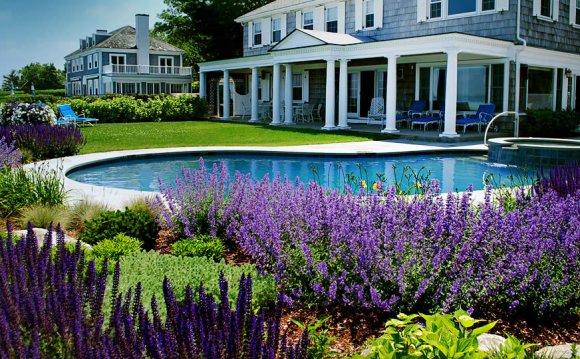
All states require landscape architects to be licensed, except for Illinois, Massachusetts, Maine, and the District of Columbia. In addition, all 50 states (but not the District of Columbia) require applicants to be licensed before they can use the title “landscape architect” and start soliciting business. Licensing requirements vary among states, but usually include a degree in landscape architecture from an accredited school, internship experience, and a passing score on the Landscape Architect Registration Exam.
Education
A bachelor's or master's degree in landscape architecture usually is necessary for entry into the profession. There are two undergraduate landscape architect professional degrees: a Bachelor of Landscape Architecture (BLA) and a Bachelor of Science in Landscape Architecture (BSLA). These programs usually require 4 years of study.
Accredited programs are approved by the Landscape Architectural Accreditation Board (LAAB). Those with an undergraduate degree in a field other than landscape architecture can enroll in a Master of Landscape Architecture (MLA) graduate degree program, which typically takes 3 years of full-time study.
Courses typically include surveying, landscape design and construction, landscape ecology, site design, and urban and regional planning. Other courses include history of landscape architecture, plant and soil science, geology, professional practice, and general management.
The design studio is a key component of any curriculum. Whenever possible, students are assigned real projects, providing them with valuable hands-on experience. While working on these projects, students become proficient in the use of computer-aided design and drafting (CADD), model building, and other design software.
Training
In order to become licensed, candidates must meet experience requirements determined by each state. A list of training requirements can be found at the Council of Landscape Architectural Registration Boards.
New hires are called apprentices or intern landscape architects until they become licensed. Although duties vary with the type and size of the employing firm, all interns must work under the supervision of a licensed landscape architect for the experience to count towards licensure. In addition, all drawings and specifications must be signed and sealed by the licensed landscape architect.
Some employers recommend that prospective landscape architects complete an internship with a landscape architecture firm during their educational studies. Interns can improve their technical skills and gain an understanding of the day-to-day operations of the business, including how to win clients, generate fees, and work within a budget.
Licenses, Certifications, and Registrations
All states require landscape architects to be licensed in order to practice except for Illinois, Massachusetts, Maine, and the District of Columbia. In addition, all 50 states (but not the District of Columbia) require applicants to be licensed before they can use the title “landscape architect” and start soliciting business. Licensing is based on the Landscape Architect Registration Examination (L.A.R.E.), which is sponsored by the Council of Landscape Architectural Registration Boards. Candidates can take the L.A.R.E. at different times of the year.















